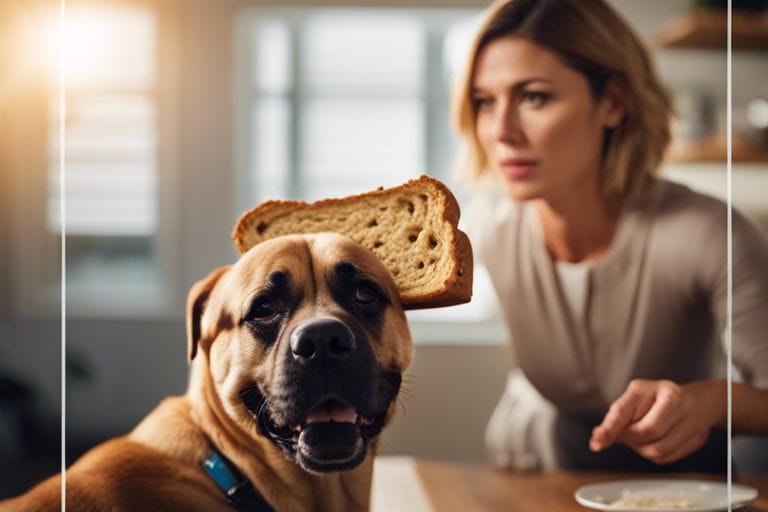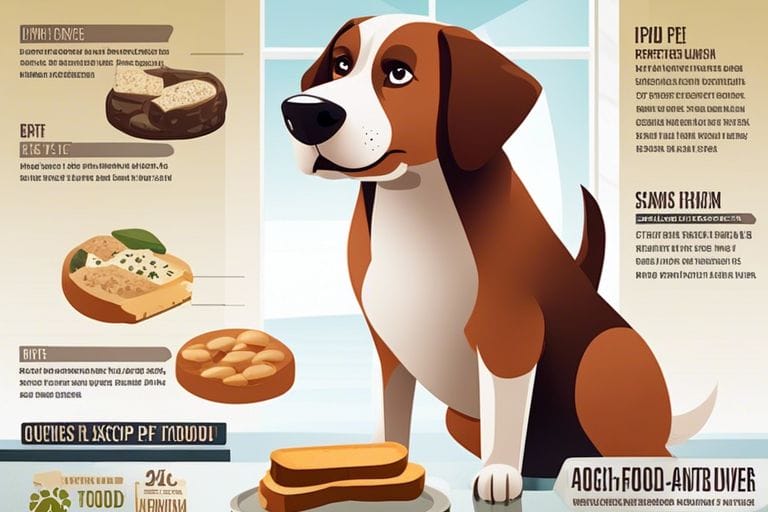Can Dogs Eat Mold? The Hidden Dangers Unveiled!
Have you ever wondered whether it’s safe for your furry friend to indulge in a piece of moldy bread or cheese? As a responsible pet owner, it’s important to understand the hidden dangers associated with dogs eating mold. While most molds are harmless, some can produce mycotoxins that can be toxic to your beloved pet. Ingesting mold can lead to a range of health issues, including gastrointestinal problems, respiratory distress, and in severe cases, organ damage. In this informative blog post, we’ll explore the potential risks of mold consumption for dogs, as well as precautionary measures you can take to safeguard your pet’s health.
Key Takeaways:
- Not all molds are toxic to dogs: While some molds can be harmful to dogs, not all molds are toxic. It’s important to understand the specific type of mold and its potential dangers before deciding whether it’s safe for your dog to eat.
- Health risks of mold ingestion: Ingesting mold can lead to a range of health issues for dogs, including vomiting, diarrhea, tremors, and in severe cases, organ damage. It’s crucial to consult a veterinarian if you suspect your dog has consumed mold.
- Preventative measures: To protect your dog from the dangers of mold ingestion, it’s essential to keep food and treats stored in airtight containers, regularly inspect and clean your home for mold, and avoid feeding your dog any food with visible signs of mold growth.
The Risks of Mold in Canine Diets
Some pet owners may not realize the potential dangers that mold can pose to their furry friends. Mold is not only a concern when it comes to your own food, but it can also be a threat to your dog’s health. The risks associated with mold in canine diets are significant and should not be overlooked. In this chapter, we will delve into the potential dangers of mold consumption for dogs and the impact it can have on their well-being.
What Is Mold?
Mold is a type of fungus that can grow on various types of food, including kibble and wet dog food. It thrives in moist and warm environments, making dog food an ideal breeding ground for mold if not stored properly. Mold can produce toxins known as mycotoxins, which can be harmful to your dog’s health if ingested.
The Health Risks Associated with Mold Consumption
When your dog consumes mold-contaminated food, they are at risk of experiencing a range of health issues. Ingesting moldy food can lead to gastrointestinal problems such as vomiting, diarrhea, and abdominal pain. Additionally, mold exposure can also result in more severe health issues such as neurological problems, liver damage, and even death in extreme cases. It’s important to note that some species of mold produce mycotoxins that are extremely dangerous and can have a lasting negative impact on your dog’s well-being.

Recognizing Moldy Foods
While it is important to be cautious of moldy foods that your dog may come across, it is equally important to be able to recognize these foods. Mold can appear on a variety of different foods, including bread, cheese, fruits, and vegetables. Moldy foods can have a fuzzy or slimy appearance, and may be discolored or have a musty odor. It is important to thoroughly inspect your dog’s food and treats for any signs of mold before feeding them to your pet.
Common Mold-Prone Foods in a Dog’s Diet
It is essential to be aware of common mold-prone foods that may be present in your dog’s diet. Some of these foods include bread, cheese, nuts, grains, and fruits. Mold can also develop in dry pet foods and treats if they are not stored properly. Be sure to check the expiration dates on your dog’s food and treats, and discard any items that show signs of mold.
How to Identify Moldy Foods
Identifying moldy foods is crucial in ensuring your dog’s safety. When inspecting your dog’s food, look for any visible signs of mold, such as discoloration, fuzziness, or sliminess. Additionally, trust your sense of smell and discard any food that has a musty or off-putting odor. Remember that even small amounts of mold on food can pose serious health risks to your dog, so it is always better to err on the side of caution and discard any questionable items.
Prevention and Safety Measures
After learning about the potential dangers of mold for your canine companion, it’s essential to implement preventive measures to keep your dog safe from mold exposure. By taking the necessary precautions, you can minimize the risk of your dog coming into contact with harmful mold.
Best Practices for Food Storage
When it comes to storing your dog’s food, proper storage is key to preventing mold growth. Make sure to store dry food in a cool, dry place, and seal it tightly to prevent moisture from getting in. Additionally, always check the expiration date on your dog’s food and discard any expired or spoiled items promptly. It’s also a good practice to clean and dry your dog’s food bowls regularly to prevent mold growth.
What to Do If Your Dog Consumes Mold
If you suspect that your dog has consumed mold, it’s imperative to act promptly to avoid potential health issues. Look out for symptoms such as vomiting, diarrhea, lethargy, and loss of appetite. If you notice any of these signs, contact your veterinarian immediately for guidance. Your veterinarian may recommend inducing vomiting or providing supportive care to help your dog recover from mold ingestion.

Dealing with Accidental Ingestion
Not all molds are harmful to your dog, but some types can produce mycotoxins, which are dangerous and can cause serious health issues. If you suspect your dog has ingested mold, whether intentionally or accidentally, it’s crucial to act quickly and seek proper treatment. Mycotoxins: Food Mold Poisoning in Dogs & Cats provide more in-depth information on this topic if you want to learn more.
Immediate Steps to Take
If you suspect that your dog has ingested mold, especially a toxic one, the first thing you need to do is to remove any access to the mold to prevent further ingestion. Next, remove any remnants of the mold from your dog’s mouth and rinse their mouth with water. Additionally, do not induce vomiting without consulting a veterinarian, as this can worsen the situation if the mold ingested is toxic. These immediate steps can help minimize the impact of mold ingestion before seeking professional care.
When to Seek Veterinary Care
It’s important to monitor your dog for any signs of illness after mold ingestion. If you notice symptoms such as vomiting, diarrhea, tremors, seizures, or disorientation, you should immediately seek veterinary care. Even if your dog appears to be fine initially, it’s still recommended to consult with a veterinarian to determine the best course of action. Early intervention is crucial in preventing further complications from mold ingestion.
Can Dogs Eat Mold? The Hidden Dangers Unveiled!
Hence, it is crucial to be aware of the potential dangers that mold can pose to your dog. Mold can produce mycotoxins, which can be harmful to your dog’s health and can lead to symptoms such as vomiting, tremors, and even seizures. It is important to keep your dog away from moldy food and to regularly check for mold in your home to ensure your dog’s safety. Remember to always consult with your veterinarian if you suspect that your dog has ingested mold or is showing any concerning symptoms. By staying informed and taking preventative measures, you can help protect your furry friend from the hidden dangers of mold.
Can Dogs Eat Mold? The Hidden Dangers Unveiled! FAQ
Q: Is it safe for dogs to eat mold?
A: No, it is not safe for dogs to eat mold. Mold can produce mycotoxins, which are toxic to dogs and can lead to various health issues such as vomiting, diarrhea, tremors, and even organ damage. It is important to keep all moldy food and substances out of reach of your pets to prevent them from consuming it.
Q: What are the potential dangers of a dog ingesting mold?
A: Ingesting mold can pose serious health risks to dogs. Mold can contain mycotoxins that are harmful to their health and can lead to symptoms such as digestive issues, neurological problems, tremors, and even death in severe cases. It is crucial to be vigilant and prevent your dog from consuming any moldy substances.
Q: What should I do if I suspect my dog has eaten mold?
A: If you suspect that your dog has eaten mold, it is important to contact your veterinarian immediately. They can provide guidance on the next steps to take, which may include monitoring your dog for symptoms, inducing vomiting if the ingestion occurred recently, or providing supportive care to address any health issues that may arise. It is always better to err on the side of caution when it comes to your dog’s health.

